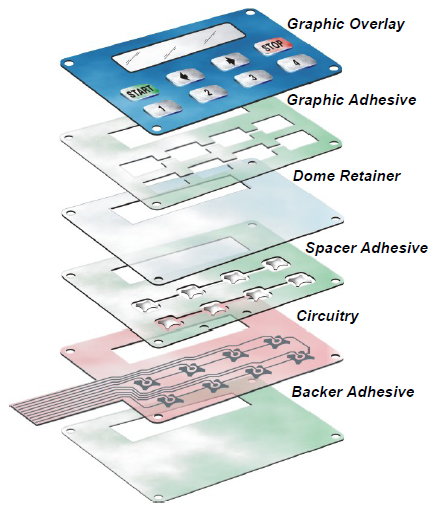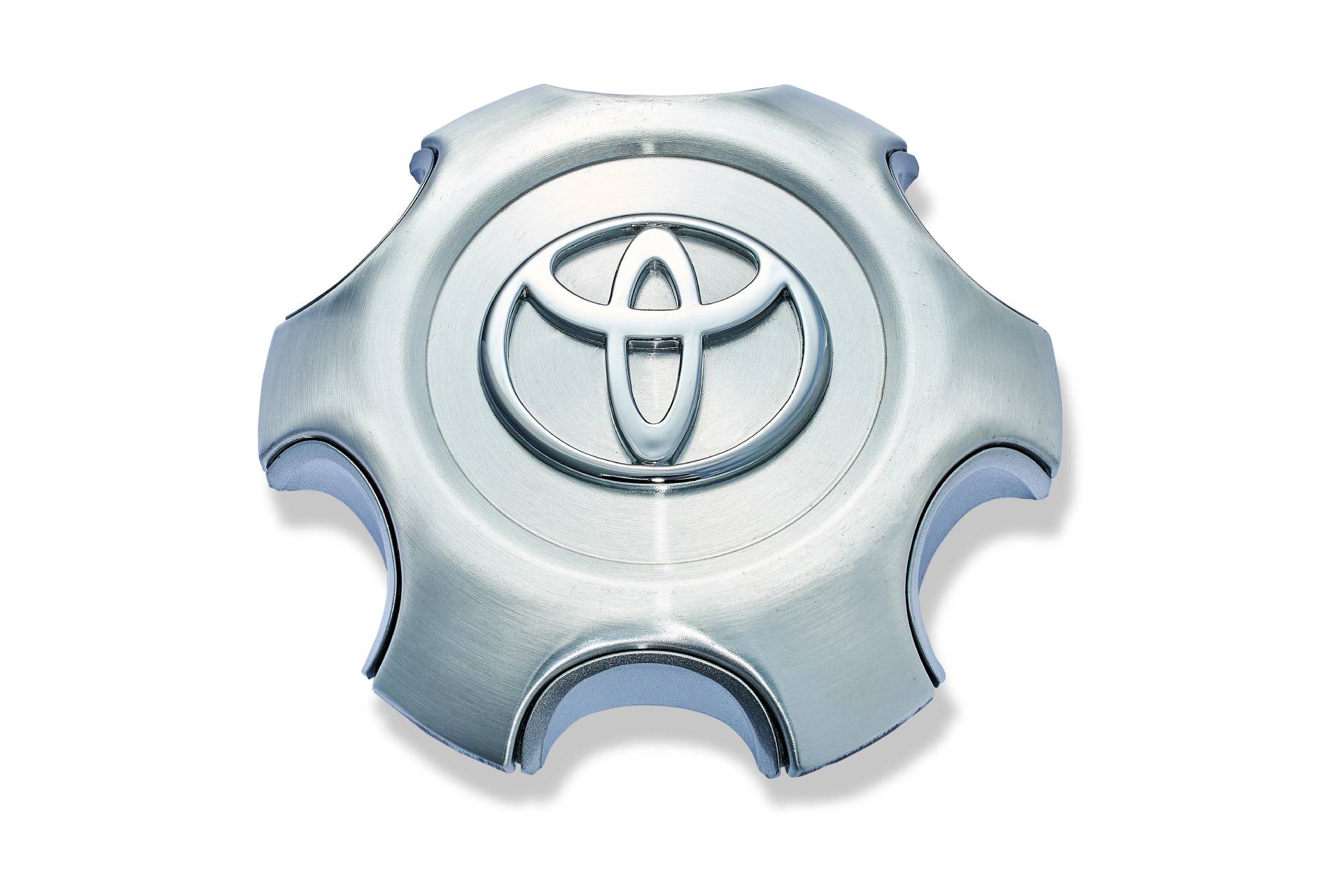What to Search for When Choosing a Membrane Layer Switch for Your Project
When you're picking a membrane layer button for your project, a number of crucial factors come into play. You'll require to think about the materials, design, and how well it aligns with your brand.
Understanding Membrane Switch Over Parts
When you dive right into the world of membrane switches, it's important to grasp the key elements that make them work. The switch usually contains three main layers: the graphic overlay, the spacer layer, and the circuit layer. The graphic overlay provides the visual interface, showing switches and signs you require for easy navigating. Beneath that, the spacer layer warranties there suffices range between the circuit and the overlay, enabling the switch to turn on without continuous pressure.
Understanding just how these layers work with each other helps you select a membrane switch that's trustworthy and fits your job requirements. Pay close focus to the thickness and product of each layer, as these variables affect durability and performance in various atmospheres.
Material Option and Its Effect
Selecting the best materials for your membrane button can considerably influence its efficiency and durability. The choice of substratum, normally polyester or polycarbonate, affects toughness and adaptability. Polyester is a lot more abrasion-resistant, while polycarbonate provides much better clarity and stamina.
Following, think about the adhesive. It needs to withstand ecological variables like moisture and temperature modifications. A solid sticky assurances that your membrane switch stays intact in time.
Do not forget the graphic overlay. The printing method made use of, whether silkscreen or digital, impacts the switch's visual appeals and longevity. High-grade inks will certainly resist fading and scraping, keeping a specialist look.
Finally, consider ecological problems. If your tool will be subjected to rough chemicals or severe temperature levels, choose materials created to endure these obstacles. Your options in products will eventually identify the button's integrity and individual satisfaction.
Style Factors To Consider for User Experience
Choosing the appropriate products lays the structure for a successful membrane button, however the layout also plays a significant role in customer experience. You'll desire to assess how the design affects functionality (membrane switch manufacturer). Keep buttons and icons intuitive and well-spaced, making it simple for customers to navigate without confusion

Shade and contrast are likewise important; assurance that your style is aesthetically attractive yet still useful. High contrast aids users quickly determine buttons, especially in low-light problems.
Finally, assess the overall visual. A smooth and modern-day layout can raise user assumption and make your product much more appealing. Stabilizing functionality with an appealing layout will bring about a far better individual experience and eventually, an extra effective item.

Ecological Aspects and Resilience
When selecting a membrane layer switch, you need to take into consideration exactly how it'll execute in various atmospheres. Aspects like temperature resistance, dampness and chemical exposure, and mechanical wear can considerably impact its sturdiness. Understanding these aspects will certainly assist you select a switch that withstands your particular problems.
Temperature Resistance Demands
As environmental problems can differ commonly, comprehending temperature resistance is crucial for making sure the toughness of your membrane layer button. You require to examine the temperature range in which your device will operate. High temperature levels can cause materials to break down, causing failing, while reduced temperature levels could make components brittle and vulnerable to fracturing. See to it to inspect the specifications of the materials utilized in the switch, like the glue and overlay, as they directly influence performance. It's likewise important to ponder potential temperature changes and their results on the switch's dependability. By picking a membrane switch with sufficient temperature level resistance, you'll improve its life expectancy and preserve functionality in challenging settings. Choose carefully to avoid expensive replacements down the line.

Dampness and Chemical Direct Exposure
Moisture and chemical direct exposure can significantly affect the efficiency and longevity of your membrane layer button, so it's critical to comprehend the environment in which it will certainly be made use of. If your job entails high humidity or direct exposure to fluids, try to find protective finishes and sealers that can boost resistance to dampness. Additionally, think about the sorts of chemicals your button might run into. Particular materials can deteriorate when subjected to solvents, oils, or severe cleansers. Choosing the best materials, like polycarbonate or polyester, can aid resist these elements. Always seek advice from the this hyperlink supplier's specs for chemical compatibility to ensure your membrane switch preserves its capability over time. By focusing on wetness and chemical resistance, you can boost the resilience of your switch in challenging environments.
Mechanical Damage
While you may prioritize attributes like appearances and performance in your membrane button, mechanical damage can substantially impact its efficiency gradually. Think about how often the button will be used and the environment it'll remain in. Frequent pressing can lead to destruction of great site products, creating problems like responsive feedback loss or perhaps switch over failure. Search for models with durable designs, such as those with protective overlays that resist scrapes and use. Additionally, check for requirements on cycle life, which indicates the amount of presses the switch can manage before revealing signs of wear. Choosing a sturdy switch warranties durability and reliability, protecting against expensive replacements and downtime in your task. Always element in resilience alongside aesthetic appeals and performance for peak performance.
Personalization Options for Branding
When it involves branding your membrane layer switch, modification options are key. You can select layout elements and shades that mirror your brand name, along with certain logo positioning and size to enhance presence. In addition, choosing the best materials and appearances can raise the overall feel and look, making your product stand apart.
Layout Elements and Shades
A large range of layout elements and colors can make your membrane layer switch not just functional but also aesthetically attractive, improving your brand name identity. When picking shades, consider your brand name's scheme; they ought to resonate with your audience and evoke the best emotions. You can additionally check out different finishes like matte or shiny to create various visual effects. Do not forget structures; adding a responsive aspect can improve individual experience and make your switch stick out. Consider including personalized graphics or patterns that straighten with your brand name message. By attentively selecting design components and shades, you not only develop a product that looks great yet also reinforces your branding consistently and successfully.
Logo Positioning and Size
After finalizing your style components and colors, the following step is to concentrate on logo positioning and size. Your logo is an essential facet of your branding, so you'll desire it to stick out without frustrating other design aspects. Review where your logo design will be most visible and impactful; common positionings consist of the top or center of the button.
Don't fail to remember to consider exactly how the logo lines up with individual interaction. This attention to information will certainly enhance both performance and brand name identification in your project.
Material and Appearance Choices
Selecting the right materials and textures for your membrane layer switch can substantially improve both its performance and aesthetic appeal. You'll intend to examine alternatives like polyester or polycarbonate, as they use resilience and resistance to use. The structure of the surface also plays a necessary function; smooth finishes provide a streamlined appearance, while textured surfaces can boost hold and tactile comments.
Personalizing the products and textures permits you to show your brand name identification effectively. You could select a matte coating to convey sophistication or a shiny look for a contemporary touch. Don't neglect regarding shade options, as dynamic tones can make your button stick out, while soft tones can develop a more sophisticated appearance
Price vs. Quality: Discovering the Right Equilibrium
When you're handling the options for membrane buttons, stabilizing cost and top quality can feel overwhelming. You intend to assure that you're obtaining a reliable item without breaking the bank. Begin by identifying your job's specific requirements. Are you focusing on durability or appearances? A lower-cost switch might save you money upfront, however if it endangers functionality, you could face higher substitute costs later on.
Search for manufacturers that offer a good mix of affordability and high standards. Research their track record and consumer testimonials to assess dependability. In some cases, spending a little bit more in high quality products can conserve you from future headaches.
Also, take into consideration the long-term performance and service warranty options. A slightly much more pricey button with a solid warranty could show to be a smarter investment. Ultimately, it has to do with locating that click for more pleasant area where you meet your budget plan while ensuring your task's success.
Examining and Quality Control Protocols
While you could discover the excellent membrane layer button design, ensuring its top quality via rigorous screening procedures is essential for long-lasting success. Beginning by confirming that the producer follows market standards, such as IPC/WHMA-A -620, to ensure a reliable product. membrane switch manufacturer. You'll desire to look for thorough screening techniques, consisting of environmental, mechanical, and electric evaluations
Ensure the buttons undergo longevity testing, mimicing real-world usage to identify any type of potential failings. Focus on the producer's quality guarantee process, which should include routine inspections and audits.

Don't fail to remember to request for examples and perform your very own tests to confirm compatibility with your task. Ultimately, take into consideration how usually the manufacturer updates their protocols; development in testing can result in improved quality. By prioritizing these testing and quality control protocols, you'll increase the possibility of an effective and long lasting membrane layer switch for your application.
Regularly Asked Inquiries
How Lengthy Does a Membrane Layer Switch Over Usually Last?
A membrane layer switch usually lasts anywhere from 1 to 10 million cycles, depending upon usage and ecological variables. You'll intend to take into consideration your particular requirements to assure it satisfies your longevity requirements properly.
Can Membrane Layer Switches Be Repaired if Harmed?
Yes, you can occasionally repair membrane layer switches if they're harmed, but it often depends on the level of the damage. Minor concerns may be fixable, while much more significant damages typically calls for substitute for appropriate functionality.
What Are the Usual Applications for Membrane Buttons?
Membrane switches are frequently used in devices, medical gadgets, and automotive controls. You'll locate them in customer electronics, commercial tools, and also gaming consoles. Their versatility makes them optimal for different interface and environments.
Exist Particular Qualifications for Membrane Layer Switches?
Yes, there are details accreditations for membrane buttons. Look for UL, CE, and RoHS accreditations to guarantee security and compliance. These qualifications show the switch fulfills market standards for quality and ecological safety.
Exactly how Do I Make Certain Proper Setup of a Membrane Layer Switch Over?
To ensure correct installation of a membrane switch, tidy the surface thoroughly, straighten it thoroughly, and use even stress. Comply with maker standards for glue curing time to make the most of resilience and functionality.
Final thought
When picking a membrane button for your project, keep these essential aspects in mind: focus on durable products, focus on user-friendly design, and think about personalization for your brand name. By carefully assessing these aspects, you'll assure your membrane layer switch not just fulfills your task requires however additionally enhances user experience and reflects your brand identity effectively.
Comments on “Product testing is a top concern when selecting a membrane switch manufacturer for custom devices.”